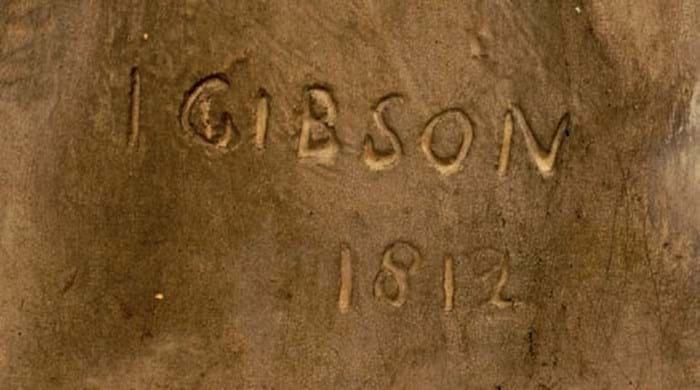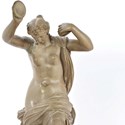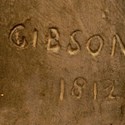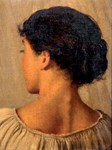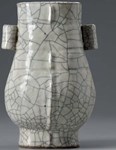The 2ft 2in (64cm) high painted model of a dancing bacchante with a big cat at her feet bore the inscription to the base I Gibson 1812.
Estimated at just £100-150, it had been consigned by a local lady who was clearing her late father’s house. During his lifetime she had wisely resisted his requests to use the unloved statue as a garden gnome.
John Gibson (1790-1866) was perhaps the most successful British sculptor of his generation.
Born in Gyffin, near Conway, he trained first as a cabinet-maker and mason in Liverpool – his appetite for classical statuary whetted by the historian and banker William Roscoe (1753-1831), who sponsored his Grand Tour in 1817.
Training under Canova, ‘Gibson of Rome’ remained in the city until his death, making his first return visit to the UK in 1844.
This rediscovered nymph represents Gibson’s first flushes of neoclassicism. Roberto C Ferrari, a Gibson authority who is curator at the Avery Architectural & Fine Arts Library of Columbia University, New York, pointed ATG to another version of this ceramic (minus the pedestal base) in the collection of the National Museum of Wales titled A Bacchante Diverting the Attention of a Tiger with her Cymbals and dated 1813.
At the time, said Ferrari, Gibson was working at the ‘marble rooms’ established by Samuel and Thomas Franceys in Liverpool c.1802. Alongside mentions of the ‘Grecian Rooms’ of George Bullock and the Herculaneum Pottery, an account of the Franceys’ shop on Brownlow Hill appears in the third edition of Stranger in Liverpool (printed by Thomas Kaye, 1812).
The figure, with some modest condition issues – including a broken but still attached left arm – attracted competition from four phone bidders, and online interest via thesaleroom.com which ultimately provided the underbidder.
The winning phone bid at the auction on July 31 was placed by a UK dealer.



